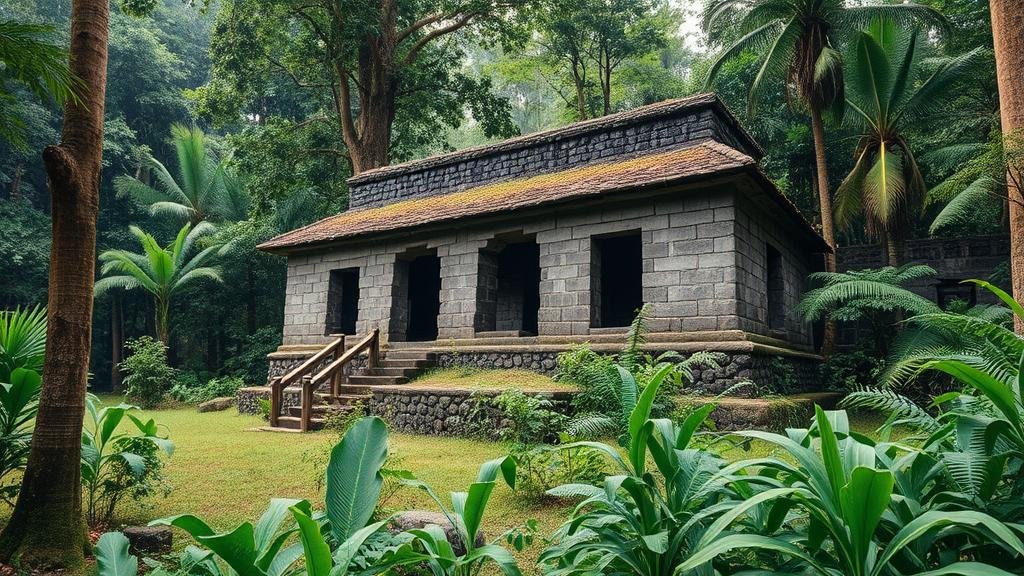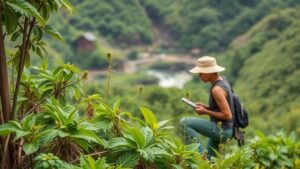How explorers use traditional knowledge to locate jungle ruins.
How Explorers Use Traditional Knowledge to Locate Jungle Ruins
In the quest to uncover ancient civilizations hidden beneath dense rainforest canopies, modern explorers increasingly rely on traditional knowledge. This synergy between indigenous wisdom and contemporary exploration techniques is key to understanding the past and preserving these invaluable sites for future generations.
The Role of Indigenous Knowledge
Traditional knowledge encompasses the cultural, spiritual, and practical insights passed down through generations within indigenous communities. This body of knowledge plays a pivotal role in guiding explorers to jungle ruins, employing techniques that have been perfected over centuries.
For example, the Maya civilization, which thrived in the dense jungles of Mesoamerica between approximately 250 AD and 900 AD, left behind a wealth of archaeological sites. Indigenous communities often possess oral histories and landmark knowledge that can point explorers to these long-lost locations, fundamentally shaping the methodologies used by archaeologists and explorers alike.
Case Studies of Successful Collaborations
One standout example is the work of archaeologist Dr. Nikolai Grube, who collaborated with local Maya communities in Guatemala. In 2018, through the use of local knowledge and advanced technology, he helped discover a network of ancient structures that were previously undetected. locals provided invaluable information about local flora and references to landmarks that pointed to the ruins locations.
- Case Study 1: In the 1990s, explorer Richard Hansen worked closely with indigenous K’iche’ and Kaqchikel Maya peoples, leading to the discovery of the ancient city of Kaminaljuyu near modern-day Guatemala City.
- Case Study 2: The use of satellite imagery and ground reconnaissance coupled with local knowledge led to the identification of new pyramids in the ancient Maya site of Tikal, Guatemala, further confirming the importance of traditional insights.
Techniques Used by Explorers
Explorers utilize various strategies to tap into traditional knowledge systems. Here are some methods commonly employed:
- Oral Histories: Stories passed down through generations can provide clues about the locations of ancient sites.
- Landmarks and Pathways: Indigenous groups often have intricate knowledge of the land, including landmark features that can guide expeditions.
- Ecological Insights: Knowledge of local flora and fauna allows explorers to identify signs of past human activity, such as altered landscapes and ancient cultivation techniques.
The Integration of Technology
While traditional knowledge is invaluable, the application of modern technology enhances exploratory missions. The integration of remote sensing, LiDAR (Light Detection and Ranging), and GIS (Geographic Information Systems) has revolutionized the field of archaeology. When combined with indigenous insights, these technologies can lead to the discovery of ruins previously obscured by vegetation.
For example, a 2012 study revealed how LiDAR was used to penetrate the dense jungles of Belize, unveiling more than 60,000 ancient structures that were previously invisible. This innovative methodology demonstrated that technology and traditional knowledge could coexist harmoniously, showcasing a more holistic approach to exploration.
Preservation and Respecting Traditional Knowledge
It is essential for explorers and researchers to respect and preserve traditional knowledge while working alongside indigenous communities. As research continues, ethical considerations around consent, profit-sharing, and cultural sensitivity must be prioritized. United Nations Declaration on the Rights of Indigenous Peoples emphasizes the importance of these practices, advocating for the recognition and protection of traditional knowledge.
Conclusion: The Future of Exploratory Collaboration
The partnership between modern explorers and indigenous communities enriches the pursuit of locating jungle ruins significantly. Recognizing the value of traditional knowledge leads to more effective exploration methodologies while ensuring that indigenous peoples are acknowledged as stewards of their cultural heritage.
As explorers venture into the world’s jungles, the collaboration with traditional guardians of knowledge is not just beneficial; it is essential. It guides explorers through the labyrinth of history, revealing stories and sites that might otherwise remain obscured by time and nature. next time a hidden ruin is discovered, it may well be thanks to the enduring legacy of those who walked the land long before.



